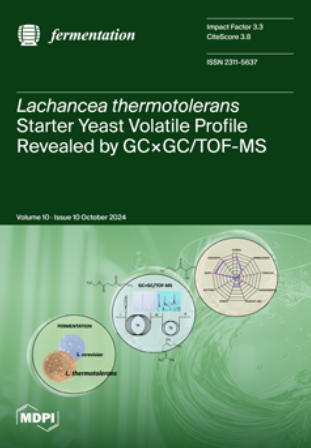High-Efficient Production of Cellulosic Ethanol from Corn Fiber Based on the Suitable C5/C6 Co-Fermentation Saccharomyces cerevisiae Strain
IF 3.3
3区 农林科学
Q2 BIOTECHNOLOGY & APPLIED MICROBIOLOGY
引用次数: 0
Abstract
As a potential alternative to fossil-based fuels, cellulosic ethanol has attracted much attention due to its great benefit to energy sustainability and environmental friendliness. However, at present, the industrial competitiveness of cellulosic ethanol production is still insufficient compared with fossil-based fuels because of the higher costs. Expanding the range of lignocellulosic biomass may be a promising measure to promote the economical production of cellulosic ethanol. Corn fiber, a byproduct from the corn deep-processing, is an attractive feedstock for cellulosic ethanol production because of its rich carbohydrate content (generally exceeding 65% of dry weight), almost no transportation cost, and low lignin content allow it to be easily handled. This study first optimized the hydrolysis conditions, including the pretreatment and enzymolysis process based on dilute sulfuric acid, to achieve a high sugar yield. Then, the corn fiber hydrolysates obtained under different hydrolysis conditions were suitably fermented by different C5/C6 co-fermentation Saccharomyces cerevisiae, indicating that the hydrolysate at high solid loading (20%) needs to detoxification to a certain extent but not low solid loading (10%) to achieve high ethanol yield. Finally, the fermentation of the 20% solid loading hydrolysates with resin detoxification was performed in a 50 L bioreactor, achieving the sugar (glucose and xylose) metabolic rate of 2.24 g L −1 h −1 and ethanol yield of 92% of the theoretical value, which are the highest reported levels to date. This study provided a potential process route for cellulosic ethanol production from corn fiber from the perspective of the suitability between the upstream hydrolysis process and the downstream fermentation strain.基于C5/C6共发酵酿酒酵母菌的玉米纤维高效生产纤维素乙醇
纤维素乙醇作为一种潜在的化石燃料替代品,因其具有能源可持续性和环境友好性而备受关注。然而,目前纤维素乙醇生产由于成本较高,与化石燃料相比,其产业竞争力仍然不足。扩大木质纤维素生物质的范围可能是促进纤维素乙醇经济生产的一项有希望的措施。玉米纤维是玉米深加工的副产品,由于其丰富的碳水化合物含量(通常超过干重的65%),几乎没有运输成本,以及低木质素含量使其易于处理,是一种有吸引力的纤维素乙醇生产原料。本研究首先对水解条件进行优化,包括预处理和稀硫酸酶解工艺,以获得较高的糖收率。然后,对不同水解条件下得到的玉米纤维水解产物进行不同C5/C6共发酵,表明高固载(20%)水解产物需要进行一定程度的脱毒处理,而低固载(10%)水解产物则不需要进行脱毒处理,以达到较高的乙醇产量。最后,在50 L的生物反应器中进行20%固体负荷水解物的树脂解毒发酵,糖(葡萄糖和木糖)代谢率为2.24 g L−1 h−1,乙醇产量为理论值的92%,这是迄今为止报道的最高水平。本研究从上游水解工艺与下游发酵菌株的适宜性角度出发,为玉米纤维生产纤维素乙醇提供了一条潜在的工艺路线。
本文章由计算机程序翻译,如有差异,请以英文原文为准。
求助全文
约1分钟内获得全文
求助全文
来源期刊

Fermentation-Basel
BIOTECHNOLOGY & APPLIED MICROBIOLOGY-
CiteScore
3.80
自引率
18.90%
发文量
594
审稿时长
7 weeks
期刊介绍:
Fermentation-Basel is an international open access journal published by MDPI, focusing on fermentation-related research, including new and emerging products, processes and technologies, such as biopharmaceuticals and biotech drugs. The journal enjoys a good reputation in the academic community and provides a high-impact forum for researchers in the field of bioengineering and applied microbiology.
 求助内容:
求助内容: 应助结果提醒方式:
应助结果提醒方式:


